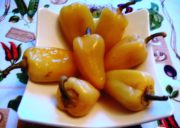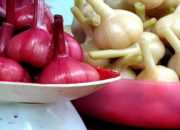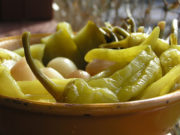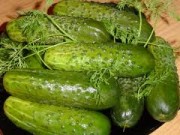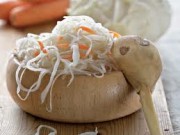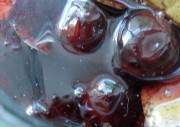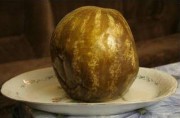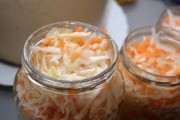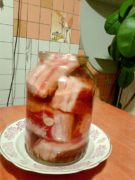Pickled bell peppers for the winter - two universal recipes for preparations
There are many dishes that include bell peppers. There is a lot of it in summer and autumn, but what to do in winter? After all, store-bought pepper from a greenhouse does not have that rich summer taste and is more reminiscent of grass. Such waste and disappointment can be avoided by preparing pickled bell peppers for the winter.
Don’t think that pickled peppers are just an appetizer for a feast. It can be stuffed with minced meat and made into cabbage rolls, or added to borscht, salads, or stews. The taste of pickled bell pepper will add sourness and piquancy to the dish, making it unusual and bright.
Pickled peppers for the winter
Peppers are usually not peeled for pickling, but if you plan to use peppers to make cabbage rolls, it is better to remove the stalk with seeds.
Wash the pepper. Some housewives advise not to wash the pepper, but to wipe it with a damp cloth and lay it out in the sun so that it wilts somewhat. This takes a long time, and you need to make sure that it doesn’t rot.
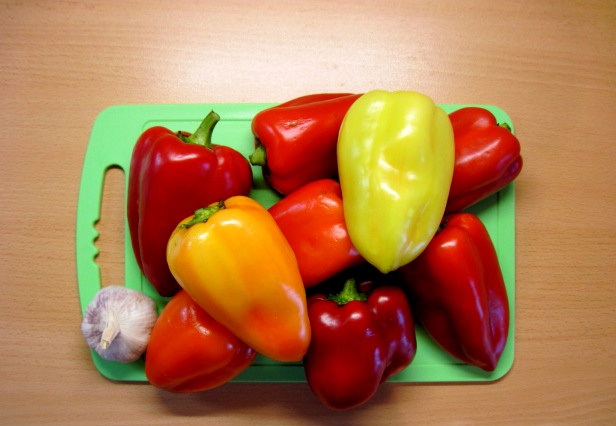
It is unlikely that this drying will significantly affect the taste of the dish, so we move on. Take a toothpick and pierce each pepper in 5-6 places. Do not use metal objects for this; pepper may oxidize upon contact with metal and darken.
Prepare the brine for 3 kg of pepper:
- 3 l. water;
- 6 tbsp. l. salt;
- 2 heads of garlic;
- dill umbrellas, peppercorns - to taste.
Dissolve salt in cold water and add finely chopped garlic to it.
For such preparations it is convenient to use buckets made of food-grade plastic. They come in different sizes, are easy to transport, and prevent vegetables from oxidizing.
Place the prepared peppers in a bucket and fill with brine so that it covers the peppers by at least 5 cm. If there is not enough brine, prepare a little more.
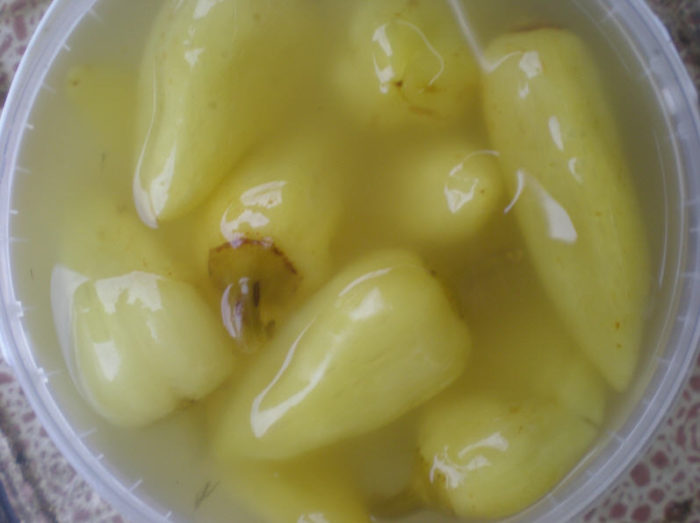
Cover the pepper with an inverted plate, and place a bottle of water on top as a pressure.
Leave the pepper at room temperature for 5-6 days. During this time, the pepper will be salted, and it can be transferred to a jar and filled with the same brine.
This preparation is stored in the refrigerator or in the cellar for about 6 months. If you need to extend the shelf life, drain the brine, make a new one, boil it, and pour hot, fresh brine over the pepper.

Pickled peppers with cabbage
This dish is prepared specifically as an appetizer. It is just as easy and quick to prepare, but the taste of this preparation is simply divine.

To begin, remove the seeds from the pepper and wash it.
Prepare the filling:
The cabbage needs to be chopped, mixed with grated carrots and salt. Then, stir the cabbage and squeeze it so that the cabbage releases its juice. This is normal sauerkrautwhich many housewives do for the winter.
Stuff each pepper with cabbage and place it in a bucket. Fill the spaces between the peppers with cabbage and compact them gently so as not to damage the pepper. Cover the top layer completely with cabbage and herbs and level it out. Cover the cabbage and pepper with an inverted plate and place pressure on top.
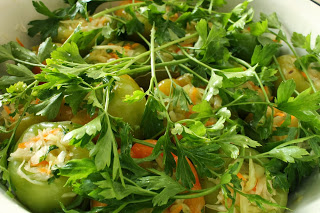
You only need to add brine if no brine appears on the second day.In this case, dilute 100 grams of salt in a liter of cold water and pour the brine into a bucket.
Leave the bucket of pepper at room temperature for 4-5 days, after which the bucket can be taken to the cellar or put in the refrigerator. Do not cover the bucket or jar with an airtight lid. Pickled vegetables must “breathe”, otherwise they will sour and become inedible.
In about 2 weeks, the sauerkraut and cabbage will be ready. This pepper lasts well for 6-8 months, and it must be consumed before this time.
Watch the video on how to ferment sweet bell peppers for the winter:

